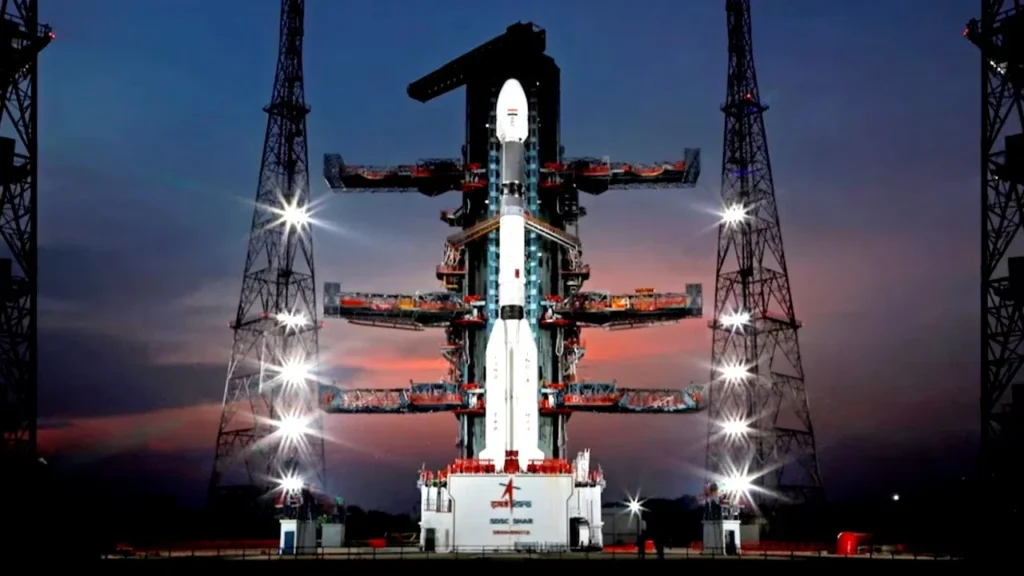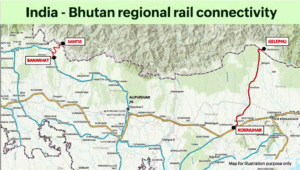
Why in News:
The Indian Space Research Organisation (ISRO) is set to achieve a historic milestone with its 100th mission launch scheduled for the end of January 2025. This mission will mark the launch of the NVS-02 satellite, part of India’s second-generation navigation satellite system, NavIC. The mission also signifies a significant shift in India’s space sector as the PSLV rocket, used for the launch, is entirely manufactured by the private sector, highlighting the increasing role of privatization in India’s space exploration efforts.
Introduction
The Indian Space Research Organisation (ISRO) has been a pioneer in advancing India’s space exploration capabilities, achieving remarkable milestones over the years. From launching the Chandrayaan and Mangalyaan missions to establishing India as a reliable partner for satellite launches, ISRO has cemented its reputation globally. In January 2025, ISRO is set to reach another landmark achievement with its 100th mission, which will launch the NVS-02 satellite into orbit. This mission is a testament to ISRO’s technological prowess, its commitment to innovation, and its ability to integrate private sector participation in India’s space industry. The launch will also mark a significant step forward in modernizing India’s regional navigation system, NavIC, which serves as an indigenous alternative to global systems like GPS.
Details of the 100th Mission
Launch of NVS-02 Satellite:
- The NVS-02 satellite is the second in the series of India’s second-generation navigation satellites.
- It is part of the Navigation with Indian Constellation (NavIC) system, which provides regional navigation and timing services.
- The satellite will be deployed into geosynchronous orbit, ensuring improved navigation services for India and its surrounding regions.
Significance of NavIC:
- NavIC is an indigenous navigation system designed to provide accurate positioning services across India and a region extending up to 1,500 kilometers from its borders.
- It serves critical applications in areas like disaster management, terrestrial navigation for hikers and travelers, and vehicle tracking.
- The NVS series introduces advanced technologies, including Rubidium atomic clocks, to enhance accuracy and reliability.
NavIC and IRNSS
NavIC (Navigation with Indian Constellation):
- NavIC is an Indian regional navigation satellite system developed by ISRO.
- It provides two types of services:
- Standard Positioning Service (SPS): Available for civilian use.
- Restricted Service (RS): Encrypted service for strategic applications such as military use.
- NavIC covers India and a region extending up to 1,500 kilometers beyond its borders.
IRNSS (Indian Regional Navigation Satellite System):
- IRNSS is the predecessor to NavIC and consists of a constellation of seven satellites.
- It was designed to provide accurate positioning information to users in India and its surrounding region.
- The IRNSS satellites operate in geosynchronous and geostationary orbits to provide continuous coverage.
- Applications of IRNSS include disaster management, vehicle tracking, and terrestrial navigation for hikers and travelers.
Key Difference:
- NavIC is the operational name for IRNSS, emphasizing its role as a regional navigation system. The second-generation satellites (NVS series) introduce technological advancements, such as Rubidium atomic clocks, to enhance accuracy and performance.
Private Sector Participation:
- For the first time, the Polar Satellite Launch Vehicle (PSLV) used in the mission is entirely manufactured by the private sector.
- This reflects ISRO’s strategy to foster a public-private partnership model, promoting greater involvement of private companies in space exploration.
- The initiative aligns with the government’s vision of reforming the space sector to boost commercialization and innovation.
Technological Advancements:
- The NVS series represents a significant upgrade from the earlier satellites in the IRNSS (Indian Regional Navigation Satellite System).
- The series is equipped with more advanced features and longer mission lives of up to 12 years, ensuring sustainable operations.
- The inclusion of Rubidium atomic clocks enhances the precision of positioning and navigation services.
ISRO’s Role in Advancing Space Technology
Over the decades, ISRO has played a critical role in making India a formidable player in space technology. With more than 60 successful PSLV missions since its introduction in 1994, the organization has consistently demonstrated its expertise in launching satellites for domestic and international clients. The PSLV has earned the nickname “Workhorse of ISRO” due to its reliability and versatility in deploying satellites into different orbits.
The 100th mission represents a culmination of decades of innovation and hard work. It is not just a celebration of ISRO’s legacy but also a turning point in the agency’s approach to integrating private players in its endeavors. This collaborative approach is expected to accelerate India’s space missions and bring the benefits of space technology to a wider audience.
Key Implications of the 100th Mission
Boost to Indigenous Navigation:
- The mission strengthens NavIC, making India less dependent on global navigation systems like GPS.
- This independence is critical for applications in national security, disaster management, and other strategic areas.
Privatization in Space:
- By involving private companies in manufacturing PSLVs, ISRO is creating a robust ecosystem for the commercialization of space technology.
- This is expected to boost employment, technological innovation, and investment in India’s space sector.
Global Competitiveness:
- With increasing privatization and a focus on efficiency, India’s space industry is poised to compete with global players like SpaceX and Arianespace.
- The success of such missions will enhance India’s reputation as a reliable space partner.
Strategic Reforms:
- The government’s focus on space sector reforms, including the development of the Next Generation Launch Vehicle (NGLV), signals a long-term vision for sustainable growth.
- Projects like Gaganyaan and Chandrayaan-4 further underscore India’s ambitions in manned and deep-space exploration.
Challenges and the Road Ahead
While ISRO’s achievements are commendable, there are challenges that need to be addressed to sustain this growth:
- Infrastructure and Funding: Expanding infrastructure and securing adequate funding will be crucial for scaling up operations.
- Skilled Workforce: Developing a skilled workforce to manage advanced technologies and private-sector collaborations is essential.
- Global Competition: Competing with established global players requires continuous innovation and cost-effectiveness.
Looking ahead, ISRO’s focus on fostering collaboration, developing next-generation technologies, and achieving self-reliance in critical areas will determine its future success.
Conclusion
The 100th mission of ISRO marks a historic moment, showcasing the organization’s journey from being a nascent space agency to becoming a global leader in space exploration. The launch of the NVS-02 satellite, coupled with the involvement of the private sector, reflects India’s progressive vision for its space program. As ISRO continues to break new ground, its emphasis on innovation, collaboration, and strategic reforms ensures that India remains at the forefront of space technology, paving the way for a brighter future in space exploration.




